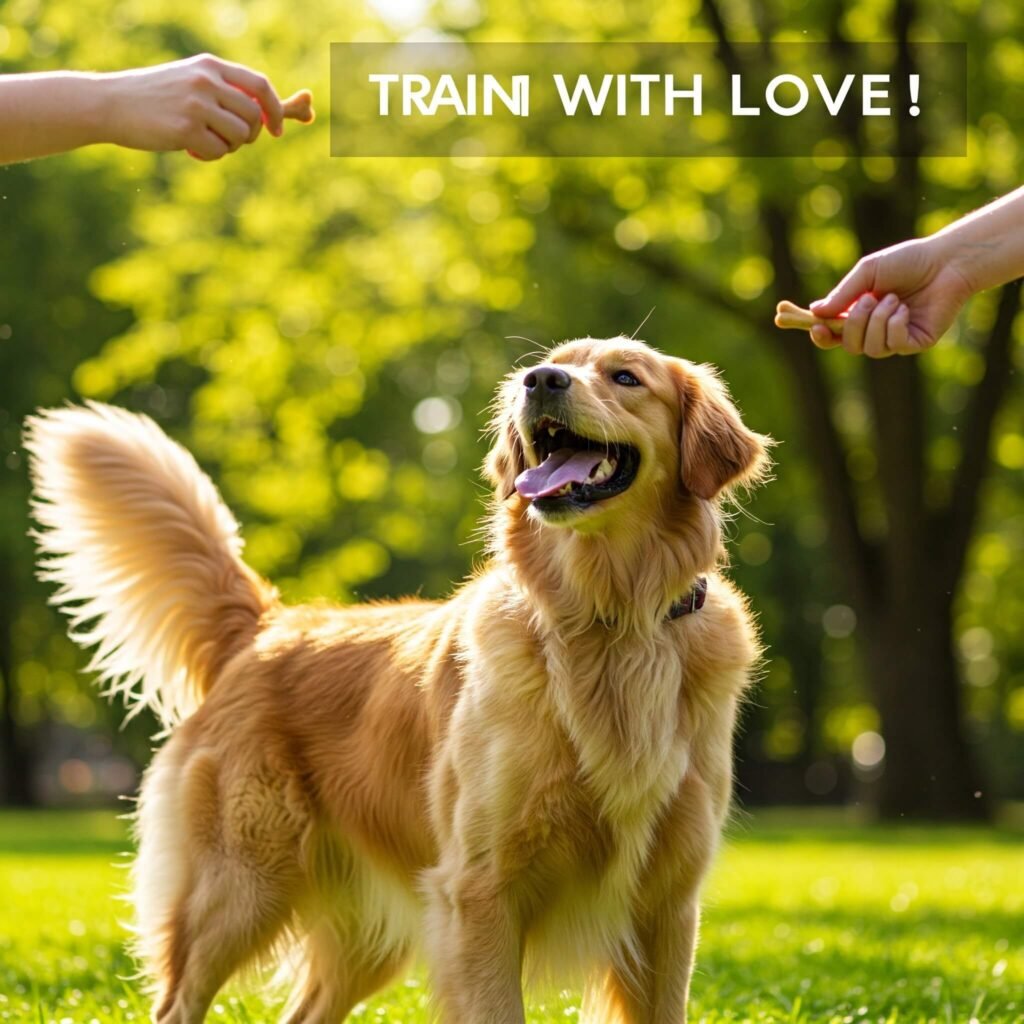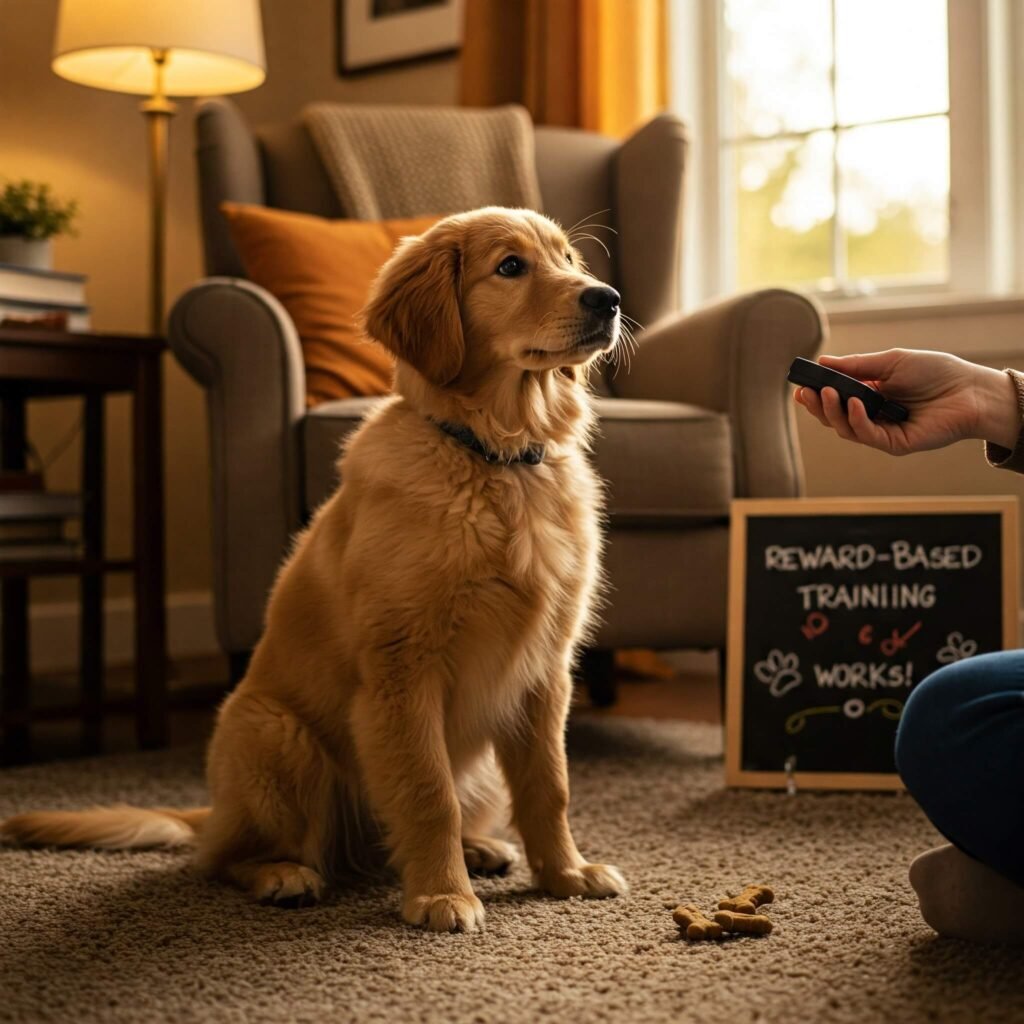Training your pet can feel overwhelming, but positive reinforcement training offers a proven, humane approach that builds trust and results. By rewarding desired behaviors with treats, praise, or play, this method encourages pets to repeat good actions. Studies, like one from the Journal of Veterinary Behavior (2020), show that dogs trained with rewards are less stressed and learn faster than those trained with punishment. This guide explores how this method works, its benefits, and practical tips to make it effective for your furry friend.

What Is Reward-Based Pet Training?
This approach involves rewarding your pet for performing desired behaviors, making them more likely to repeat those actions. Unlike aversive methods that use punishment, positive reinforcement training focuses on encouragement. For example, giving a treat when your dog sits on command reinforces the behavior.
Core Principles of Effective Pet Training
- Rewards: Use treats, praise, or toys to motivate your pet.
- Timing: Reward immediately after the behavior to create a clear association.
- Consistency: Use the same cues and rewards to avoid confusion.
- Patience: Learning takes time, especially for complex behaviors.
The American Kennel Club notes that reward-based methods are highly effective for teaching obedience and building a strong pet-owner bond.
outbound link: What Is Positive Reinforcement in Dog Training?
Does This Training Method Really Work?
Yes, positive reinforcement training is backed by science and real-world success. A 2017 study in Applied Animal Behaviour Science found that dogs trained with rewards showed fewer stress behaviors, like cowering, compared to those trained with corrections. Pet owners also report faster results and happier pets.
Why Reward-Based Training Succeeds
- Reduces Fear: Pets learn without stress, fostering confidence.
- Strengthens Bonds: Rewarding good behavior builds trust between you and your pet.
- Versatile: Works for puppies, adult dogs, and even cats or birds.
- Long-Lasting: Behaviors learned through rewards are retained longer.
Real-World Example: Sarah adopted a shy rescue dog, Max, who barked at strangers. Using positive reinforcement training, she rewarded Max with treats for staying calm around new people. Within three months, Max’s barking reduced significantly, and he greeted guests with a wagging tail.

How to Implement Effective Dog Training
Ready to try positive reinforcement training? Follow these steps to set your pet up for success.
Step-by-Step Guide to Reward-Based Training
- Choose a Reward: Select high-value treats (like small pieces of chicken) or a favorite toy. For some pets, verbal praise works wonders.
- Start Simple: Begin with basic commands like “sit” or “stay.” Use a clear cue and reward immediately when your pet complies.
- Use a Marker: A clicker or word like “yes” marks the exact moment of the desired behavior. Learn more at Karen Pryor Clicker Training.
- Practice Regularly: Train in short, 5–10-minute sessions, 2–3 times daily.
- Fade Rewards Gradually: Once the behavior is consistent, reduce treats, relying more on praise or play.
Tools for Pet Training
- Clickers: Precise for marking behaviors. Available at Petco.
- Treat Pouches: Keep rewards handy during sessions.
- High-Value Treats: Zuke’s Mini Naturals are a popular choice for training.
- Training Mats: Help pets focus during sessions, especially for “stay” commands.
Pro Tip: Vary rewards to keep your pet engaged. For example, alternate between treats and a quick game of tug-of-war.
Common Challenges in Pet Training
While this method is highly effective, it’s not without challenges. Here’s how to overcome them:
Addressing Slow Progress in Training
- Solution: Break tasks into smaller steps. For example, if teaching “roll over,” reward your dog for lying down first, then for turning their head.
- Be Patient: Some dogs, like high-energy breeds, may need more time to focus.
Avoiding Over-Reliance on Treats
- Solution: Gradually replace treats with praise or play. Randomize rewards to keep your pet guessing.
- Example: After teaching “sit,” reward with treats 50% of the time and praise the rest.
Managing Distractions
- Solution: Start training in a quiet environment, then gradually introduce distractions like other pets or noises.
- Resource: The ASPCA offers tips on distraction training.

When to Seek Professional Help for Training
If your pet struggles with specific behaviors, like aggression or severe anxiety, a professional trainer can enhance your efforts. Look for:
- Certified Trainers: Credentials like CPDT-KA from CCPDT.
- Veterinary Behaviorists: For complex issues, find one via AVSAB.
- Group Classes: PetSmart offers reward-based classes for socialization and obedience.
Additional Tips for Successful Pet Training
To maximize your training efforts, incorporate these habits:
- Exercise First: A tired pet is more focused. Try a 20-minute walk before training.
- Keep It Fun: Use an upbeat tone and end sessions on a positive note.
- Involve the Family: Ensure everyone uses the same cues and rewards.
- Track Progress: Log behaviors to monitor improvement over time.
Frequently Asked Questions
How long does positive reinforcement training take?
Simple commands like “sit” can take days, while complex behaviors may require weeks or months of consistent practice.
Can this method work for older dogs?
Yes! Older dogs learn well with rewards, though they may need more repetition.
Is reward-based training better than punishment?
Research shows reward-based methods are more effective and reduce stress, making them the preferred choice.
Conclusion: Positive Reinforcement Training Works Wonders
Positive reinforcement training is a game-changer for pet owners, offering a humane, effective way to teach obedience and strengthen your bond. By rewarding good behaviors, you’ll see lasting results and a happier pet. Start with simple commands, stay consistent, and watch your furry friend thrive. Ready to begin? Grab some treats and start training today!

